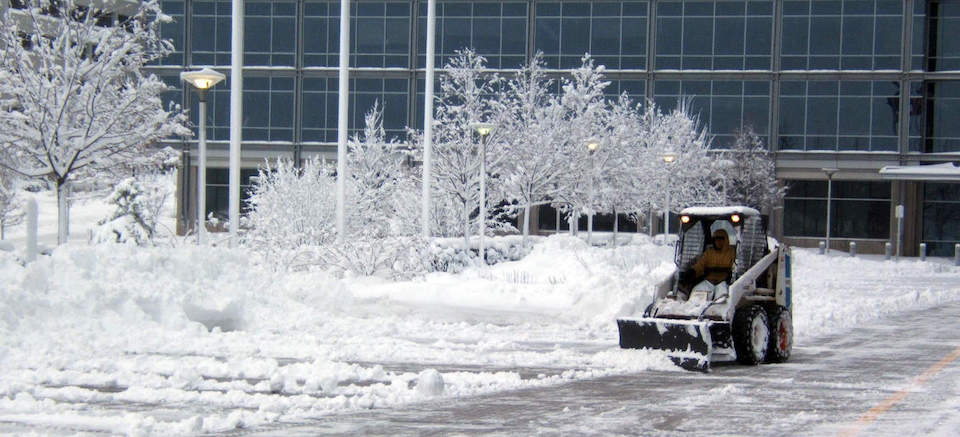Winter Property Safety: Snowplow Protection Tips and More
February 6, 2020
Winter property safety at your financial institution isn’t just about shoveling and salting your sidewalks. Follow this checklist to ensure that you’re doing all you can to prevent damage to your property while keeping your customers, staff and other visitors safe.
Prevent Snowplow & Snow Removal Damage
Ideally, you’ll accompany your snow removal team on a practice run before the snow falls. Identify areas where snow tends to accumulate the most, such as awnings, overhangs and roofing areas. Fall is a good time to do this because it’s a rainy time of year, and you’ll be able to see water drainage patterns and note any problems that could worsen later when accumulated snow begins to melt.
Point out problem areas where people have fallen or property has been damaged in the past. Commonly damaged areas and equipment include sprinklers, curbs, drive-through lane equipment, building corners, landscaping, parking or other signage, and parking blocks.
Create a priority list for your snow removal team so the highest-traffic walking and driving paths are cleared first. Discuss what kinds of materials (salt or otherwise) will be used to combat ice and snow, and ask about eco-friendly ice-melting substances if your company has a sustainability initiative. When writing your contract, ensure your snow removal team has sufficient insurance in the event of property damage or negligence, and that work cannot be subcontracted out, since subcontractors may not carry adequate insurance.
Do an inspection following snow removal visits by documenting any damage with photos and record the dates of incidents.
Install Safety Products
A wide variety of winter property safety products are available to protect your buildings and equipment from damage. Some of these include:
Steel bollards and bollard covers to protect equipment and buildings from vehicles and snow removal machinery. There are many bollard covers to choose from, including standard, lighted, architectural and decorative styles. These are available in many colors to match your financial institution’s branding.
ADA pads help those with disabilities know they’re approaching a traffic area, but the raised dome pattern on them can also improve traction in snow for everyone.
Rubber parking blocks are durable and won’t chip or crack like concrete blocks can. Similarly, portable parking sign systems with bases that are constructed of hard plastic rather than concrete will also resist chipping and cracking.
Flexible bollards allow some “give” to withstand the impact of vehicles that slip into them in harsh driving conditions.
Stop Slips & Falls
In addition to promptly removing snow and ice, you can prevent slips and falls by ensuring you have adequate lighting along walkways and in parking areas. Lighted bollards can add interest while improving safety. LED bulbs provide a brighter light and are more energy-efficient.
Think about your flooring inside your buildings, too. Immediately inside entryways, consider installing commercial carpeting, such as carpet squares, rather than a hard-surface floor like tile, which can increase the risk of falls when snow is tracked in.
From protecting your buildings and equipment from snowplow damage to preventing falls, achieving good winter property safety is something you need to plan out and think about with foresight.
J&P’s facilities maintenance crew is available to maintain your properties all year long. Winter is also the best time to start planning for your outdoor projects that require warmer weather. Thinking about these tasks now allows you ample time to get estimates and plan your budget for needed repairs and improvements. What kinds of work will your buildings need this spring and summer? Contact the J&P team at 262.346.8451 or send us a message for expert help in tackling your financial institution’s facilities maintenance and improvement to-do list. We can also help with reviewing contracts.








 ©2024 J&P ATM Site Experts, LLC
©2024 J&P ATM Site Experts, LLC